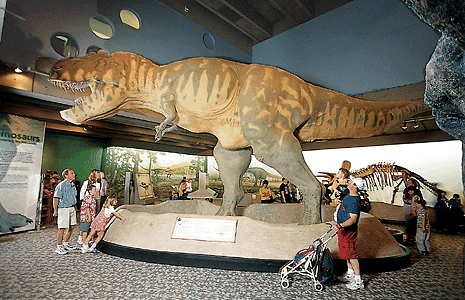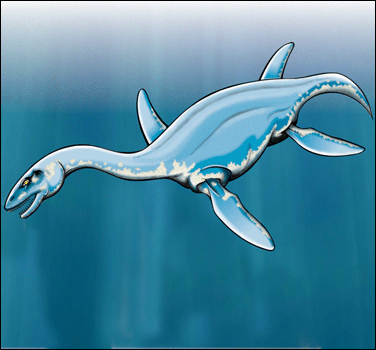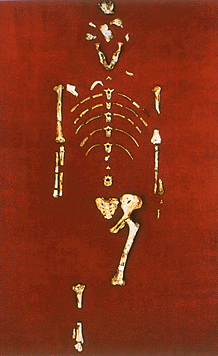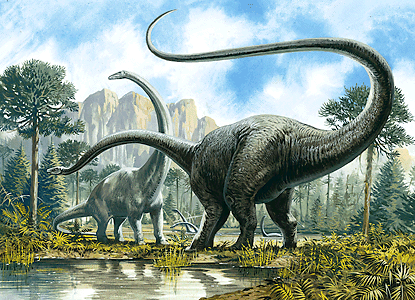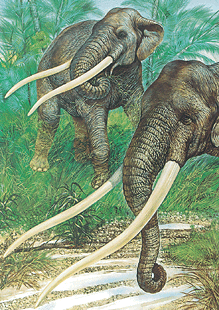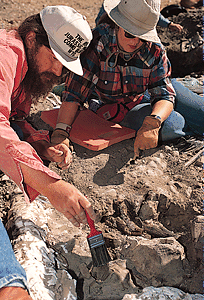New Fossil May Be Oldest Bird
Thursday, May 30th, 2013May 30, 2013
A newly described 160 million-year-old fossil from China is now the leading contender for the title of the world’s earliest bird. The fossil, given the scientific name Aurornis xui (meaning dawn bird), was described in the online edition of the journal Nature by a team led by paleontologist Pascal Godefroit of the Royal Belgian Institute of Natural Sciences in Brussels, Belgium. The scientists claim not only that Aurornis is the world’s oldest bird, but also that their discovery ends the debate about whether another famous fossil, the feathered Archaeopteryx, shared a perch on the bird family tree.
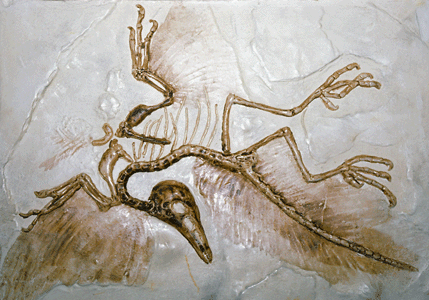
The remains of feathers and birdlike wings are clearly visible in the fossil of Archaeopteryx. This animal had a crow-sized body and lived about 150 million years ago, near the end of the Jurassic Period. (© Sally A. Morgan, Ecoscene/Corbis)
The nearly complete Aurornis fossil, encased in sedimentary (layered) rock, was unearthed by a farmer in the Liaoning Province of northeastern China some time ago. A local fossil dealer sold the specimen to the nearby Yizhou Fossil and Geology Park museum, where it was stored. In 2012, Godefroit and his team examine the specimen. They were able to confirm that the fossil came from the Tiaojishan Formation, a region famous for having produced many fossils of feathered dinosaurs and early birds. They dated the sedimentary rock that encased the fossil to about 160 million years ago. Clear impressions of downy feathers along the tail, arms, legs, neck, and chest of Aurornis suggested the creature was capable of gliding but lacked larger feathers necessary for true flight.
During the Jurassic Period, from about 200 million to 145 million years ago, some meat-eating dinosaurs began evolving birdlike skeletons and sprouting feathers on their bodies. One group of these creatures eventually split off to become birds, although researchers have long debated which one it was and when it actually happened.
Godefroit and his team compared almost 1,000 anatomical features of Aurornis with those of about 100 other dinosaurs and birds. These comparisons allowed them to construct a computer-generated cladogram, a kind of family tree illustrating how the species are related to one another. The resulting cladogram placed Aurornis at the very base of the family tree of modern birds. Combined with the early date for this fossil, the analysis makes Aurornis the oldest known bird by a margin of about 10 million years.
Scientists have long regarded Archaeopteryx, a feathered animal that lived about 150 million years ago near the end of the Jurassic Period, as the oldest example of a bird in the fossil record. First discovered in the Solnhofen limestone beds in Bavaria, Germany, in 1861, this crow-sized creature had a skeleton closely resembling that of a small dinosaur. However, it also had fully developed feathers and birdlike wings. As a result, Archaeopteryx has traditionally been classified as a bird. However, some paleontologists disagree with that conclusion. They argue that Archaeopteryx and similar fossils belonged to a side branch of feathered dinosaurs that separated from the main line leading to birds. However, this new analysis of Aurornis places Archaeopteryx firmly back on the bird line.
Additional World Book articles:
- Prehistoric animal
- Paleontology 2011 (a Back in Time article)

